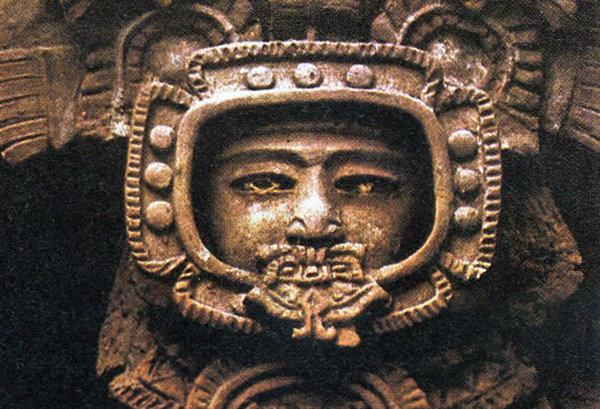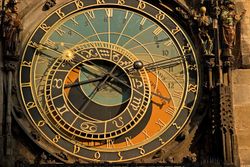Category:Arch-fi
|
Unsubstantiated claims of newly found historical documents or overt forgery have affected the field of Biblical Studies since its inception. These Modern Apocrypha aimed to offer alternative views and new meanings to familiar events and familiar characters, while longing for scholarly attention. A new phenomenon, however, emerged in the 19th century, when some ancient or new legends about the past exited the realm of fiction and scholarship and began to be developed in scholarly form, as if they were genuine historical facts. The new genre of Fantastic Archaeology (arch-fi) was born. What all arch-fi theories have in common is a total disregard for, if not an overt opposition against, the rules of the historical method. Instead of testing the evidence to see what hypotheses it fits, Arch-fi frames the archaeological data to fit a "desired conclusion." The book that marks the beginning of the new genre is Anacalypsis (1836 Higgins), arch-fi book. Higgins reiterated the ancient concept of Hermeticism about the existence of a primeval wisdom of humankind, which in his opinion originated in India. Enoch was a representative of such primeval wisdom; and the teaching of Jesus was rooted on such a wisdom. After Charles Étienne Brasseur de Bourbourg and Augustus Le Plongeon revived the myth of Atlantis in order to explain the supposed similarities between ancient Egyptian and South-American civilizations, in 1872 Edward Vaughan Hyde Kenealy reinvented Enoch as the king of Atlantis. Kenealy's suggestion would not enter the classical narrative of Ignatius L. Donnelly (Atlantis: The Antediluvian World (1882 Donnelly), arch-fi book), but would reemerge with The Occult Sciences in Atlantis (1943 Spence), arch-fi book. The first "pseudo-scholarly" books on Jesus were published around thesis like the Jesus Survival and speculations about Jesus Hidden Years, and concerned the alleged discovery of secret documents from the time of Jesus. The Essenes provided a good example of a secret society that could be easily connected either with the education of Jesus or with the "staging" of his resurrection. After the publication of Anacalypsis, the interest focused on the connection between Jesus and India. The first result was a revival of the Jesus Myth Theory with The World's Sixteen Crucified Saviors (1875 Graves), arch-fi book. The Jesus Myth Theory was born in the 18th century as a scholarly theory, but after the publication of Das Leben Jesu: kritisch bearbeitet (The Life of Jesus: Critically Examined / 1835 Strauss), book never regained its status in scholarship although destined to a great success in arch-fi works. A new chapter was open in 1894 when Notovitich claimed to have found written evidence that Jesus lived in India during his Hidden Years. Notovitch's theory was soon connected with the theory that Jesus survived the crucifixion and consequently, went (or returned) to India and died there. The theory was largely exploited in Anti-Semitic circles and by Nazism as evidence that Jesus was an Aryan, persecuted as such by the "inferior Jewish race"; see Der ewige Jude (1940 Hippler), arch-fi documentary. Not accidentally, the two major non-fiction books to revive the Jesus Survival Hypothesis after the Second World War and the Holocaust, namely, The Nazarene Gospel Restored (1953) by Robert Graves and The Passover Plot (1965) by Hugh J. Schonfield, would be very careful to distant themselves from racial theories, emphasizing the Jewishness of Jesus. In the 1950s and 1960s the concept of the existence of a primeval wisdom of humankind was contaminated by theories about the presence of aliens on earth; see UFO and the Bible (1956 Jessup), arch-fi book and Erinnerungen an die Zukunft (Chariots of the Gods? / 1968 Däniken), arch-fi book. It would grow to become one of the most influential trends in contemporary arch-fi. In the 1970s The Jesus Scroll (1972 Joyce), arch-fi initiated a new trend by claiming that Jesus had a wife and fathered a child. The work also introduced as a historical fact the idea of an ongoing conspiracy by Church authorities to hide the true nature of Christianity. In the 1970s it also became popular to take some biblical events as evidence for the presence of aliens on earth; see Alien Jesus. In the 1980s, such beliefs developed in more and more elaborated theories. In 1982 Holy Blood, Holy Grail by Michael Baigent, Richard Leigh, and Henry Lincoln connected theories about the marriage of Jesus and Church conspiracy, with the legend of the Holy Grail. The book claimed that Jesus of Nazareth married Mary Magdalene, had children and started a royal dynasty championed today by a secret society called the Priory of Sion. In the 1990s it was the delay in the publication of the Dead Sea Scrolls that generated a new wave of non-fiction literature speculating on the conspiracy by the Vatican to hide material that could have a devastating effect on the credibility of the Christian faith. The 2000s saw an unprecedented spread of Fantastic Archaeology. The Internet, the world-wide success of the Da Vinci Code and the general fascination for conspiratory theories, have popularized the genre and prepared the setting for some sensational, highly-publicized (and quickly forgotten) media events. Sometimes, the boundaries between scholarly and arch-fi work are difficult to discern. Simcha Jacobovici, with the support of some scholars, has specialized in the production of elaborated, very entertaining and highly controversial TV shows, such as the premiere in 2007 of the documentary on The Jesus Family Tomb, which presented the rediscovery of the tomb of Jesus and his family. While claiming to be "historical" work, most scholars do not regard it as such; the controversy is open and has even caused legal suits. References
External links
|
English -- French -- German -- Italian -- Spanish -/- Danish -- Dutch -- Japanese -- Korean -- Swedish -- Urdu
Cognate Fields
|
Pages in category "Arch-fi"
The following 18 pages are in this category, out of 18 total.



